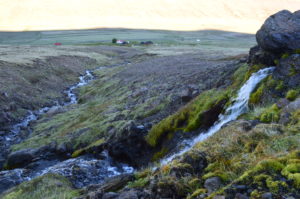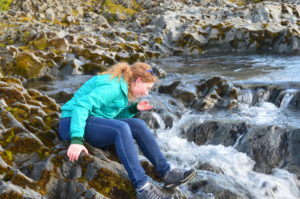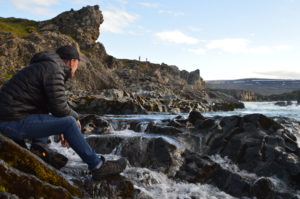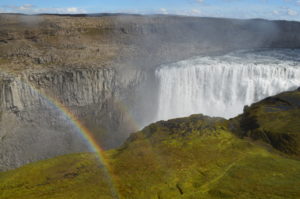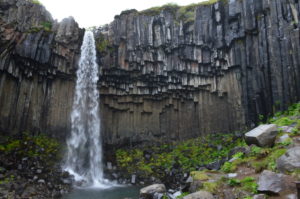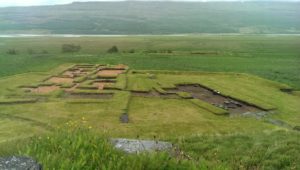I think one of my favorite things about Iceland has been the landscape. It is absolutely stunning! Iceland is an island created by volcanic and glacial activity. Iceland is situated on the Mid-Atlantic Ridge, where the North American and Eurasian tectonic plates are diverging. This creates almost constant volcanic activity. Though most of it is small, the country experiences a large eruption approximately every 5 years. Because of this, instead of driving around the country and seeing extensive fields of grass or farm land like you would in the Midwest, you see vast lava fields. Sometimes the lava rocks are covered by moss, which Iceland has over 600 species of.
There are so many mountains on the island, as well, because of the tectonic activity. Out in the country, there were hostels we stayed in where we were completely surrounded by mountains. I loved this because it gave us so many opportunities to hike! One of my favorite hikes was when I woke up early one morning to climb a mountain directly behind our hostel. It was peaceful and relaxing. I only got part way up because I didn’t give myself enough time, but one of the biggest takeaways I got from that hike actually had to do with Dr. Bryan’s class on folklore and mythology. In one our lectures, we talked a little bit about how the landscape shaped some of that folklore. Hiking that mountain, I could completely see how people thought there were trolls that lived there or that they would’ve seen fairies, so much that I started to believe it myself. I really wanted to see a troll in the rocks I was climbing on!
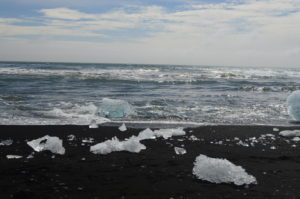
I never thought I’d see ice in the middle of June. Chunks of the Jökulsárlón glacier in the Atlantic
Glaciers have also helped shape the landscape of Iceland as well by shaping the mountains. I think the coolest thing about the mountains we saw were how many waterfalls there are! When the glaciers melted, they left behind numerous streams, most of which fall down the mountains. Some mountains would have 6 or 7 streams running down them. This also helps to form the numerous amounts of waterfalls Iceland has! We saw some incredible waterfalls. We saw some tall ones, small ones, powerful ones, adorable ones. We even saw the most powerful waterfall in Europe! I loved seeing the touristy waterfalls, but I liked seeing the waterfalls where we could get right up to them. One waterfall we went to, Goðafoss, we were able to climb around the stream before it fell off the cliff and as it flowed down the mountain again. We even drank from it (Iceland has extremely clean water- bottled water is literally just tap water).
I would absolutely go back to Iceland in a heart beat to explore all of the natural wonders it possesses. We only skimmed the surface of all the hiking and waterfalls and glaciers and endless nature Iceland has to offer.
